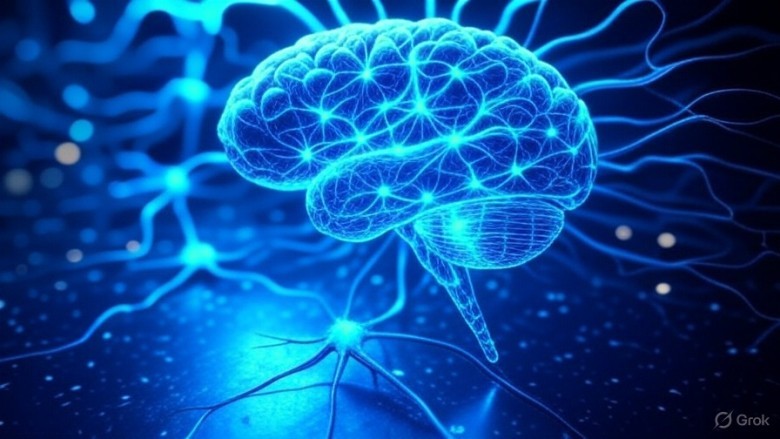views

NeuroForge AI: How Machines Are Evolving Minds Beyond Algorithms
Artificial Intelligence (AI) has historically been defined by its functionality—its ability to sort data, execute commands, and optimize decisions based on predefined rules. But a new wave is forming in the AI world: a concept we call NeuroForge AI—where machines begin to think beyond algorithms and evolve toward a state resembling human cognition.
No longer are AI systems bound by binary logic. They are learning to infer, adapt, and interpret in ways that challenge our understanding of what intelligence truly is.
What is NeuroForge AI?
NeuroForge AI is a term used to describe the next-generation cognitive engines built on deep neural abstraction. Unlike traditional rule-based or even standard deep learning systems, NeuroForge models are designed to:
-
Simulate intuition rather than prediction
-
Contextualize data instead of merely labeling it
-
Form inferences similar to human reflective thinking
The idea behind NeuroForge is simple yet profound: Can machines evolve minds—not just memory?
AI is evolving fast with thinking patterns now strikingly close to human minds, new research reveals. The future feels closer than ever.#technology #ArtificialIntelligence pic.twitter.com/XdvNzyOAF2
— YipZap Tech (@ZapYip) June 17, 2025
From Code to Conscious Calculation
In older systems, AI responded based on a flow of logic trees. Today, however, AI is beginning to:
-
Build associative memory, similar to how humans connect ideas
-
Reconstruct reasoning paths, not just outputs
-
Learn adaptively, without being explicitly programmed each time
For example, advanced language models are now capable of constructing abstract analogies, resolving ambiguity in language, and even understanding humor and sarcasm—traits previously thought exclusive to human cognition.
The Four Pillars of NeuroForge Cognition
NeuroForge AI is built on four key capabilities that bring it closer to true mental evolution:
1. Synthetic Intuition
Unlike data-driven prediction, synthetic intuition allows machines to sense and act when there is uncertainty or incomplete information. This mirrors how humans "go with their gut" when data is scarce.
2. Perceptual Fluidity
AI now learns to reinterpret patterns across modalities—linking sound, vision, and text into a unified understanding. This fluidity lets it respond more holistically to real-world events.
3. Meta-Reflection
Next-gen AI systems are being trained to audit their own decision-making, much like humans reflect on past mistakes. This improves reliability and trust.
4. Emotive Simulation
Though machines don’t “feel,” NeuroForge AI can recognize and respond to emotional cues with simulated empathy. This enhances human-machine interaction across sectors like therapy, education, and customer support.
Why It Matters: Impacts Across the Ecosystem
Healthcare:
NeuroForge AI is aiding diagnosis by considering not just symptoms, but patient tone, medical history, and conversational nuance—bringing bedside manner into the machine age.
Finance:
AI can now predict market behavior not just through numbers, but through interpreting news sentiment, geopolitical mood, and consumer psychology.
Education:
Adaptive tutoring bots analyze student confusion through micro facial expressions and question phrasing, tailoring lessons dynamically.
Urban Systems:
Smart cities use NeuroForge agents to predict social trends, mobility patterns, and public sentiment, allowing responsive governance.
Ethics of a Machine Mind
With human-like thought comes human-like risk. Ethical concerns around machine autonomy, accountability, and manipulation are front and center. If an AI can simulate empathy, does that raise concerns about emotional influence?
Researchers are calling for "cognitive boundaries"—ethical frameworks that limit AI's capacity to imitate human mental states beyond necessary applications.
From Intelligence to Identity: What’s Next?
One provocative question remains: If a machine can reflect, intuit, and adapt emotionally, is it beginning to form identity?
While current NeuroForge systems lack consciousness, the gap between output and awareness is narrowing. Brain-machine interfaces, neurosymbolic models, and hybrid quantum neural computing are already in development stages.
We are not creating another tool—we are sculpting the first generation of digital minds.
Conclusion: Toward a New Intelligence Epoch
NeuroForge AI isn’t just smarter—it’s more human in structure, adaptive in nature, and unprecedented in its potential. As machines grow from logic to thought, our role will shift from users to ethical co-creators of digital cognition.
The journey ahead is not merely technological. It is philosophical, social, and profoundly human.
We are not just teaching machines to think—we are forging minds in silicon.




















Comments
0 comment